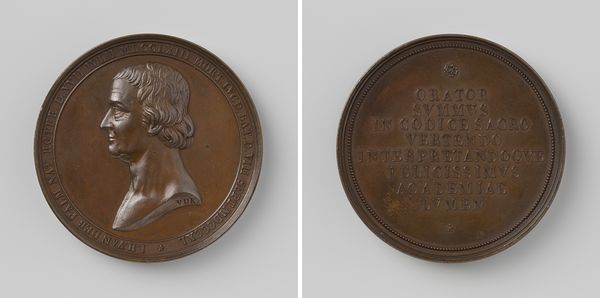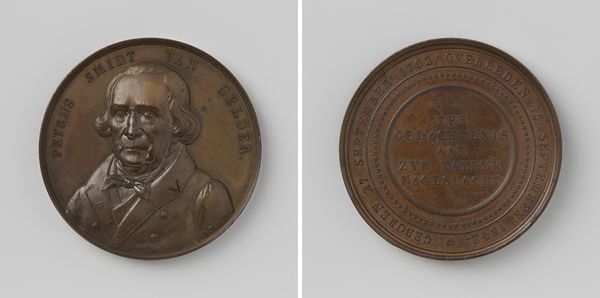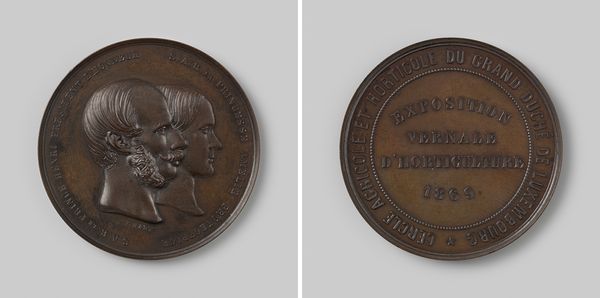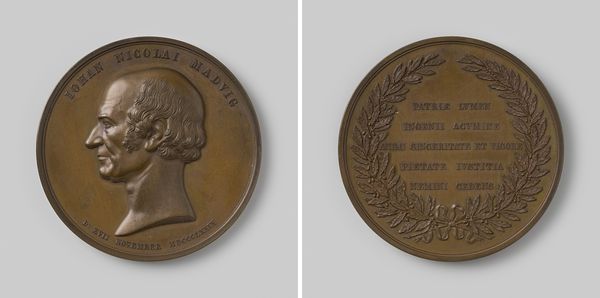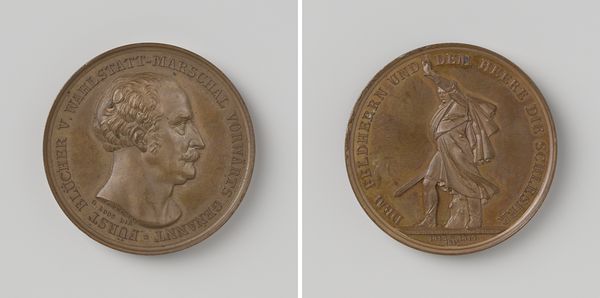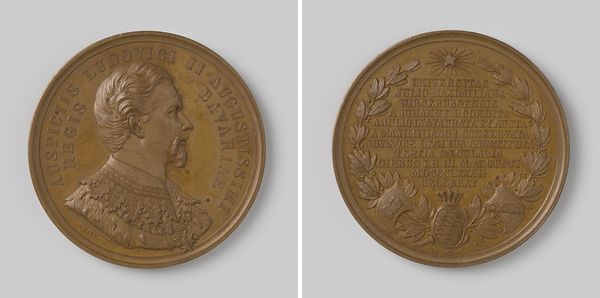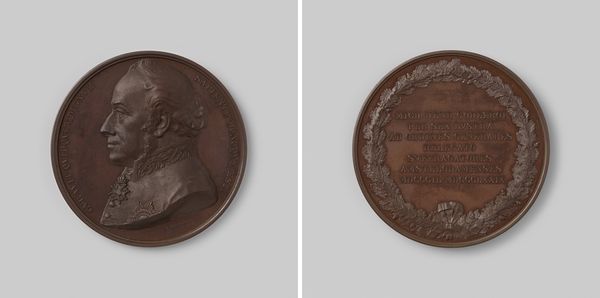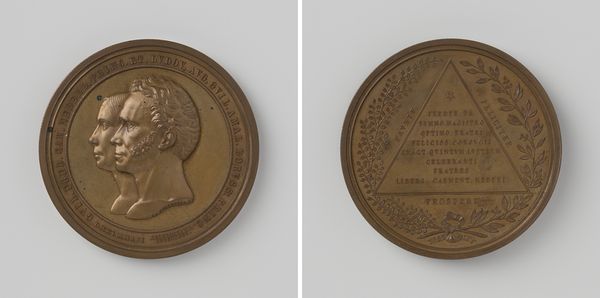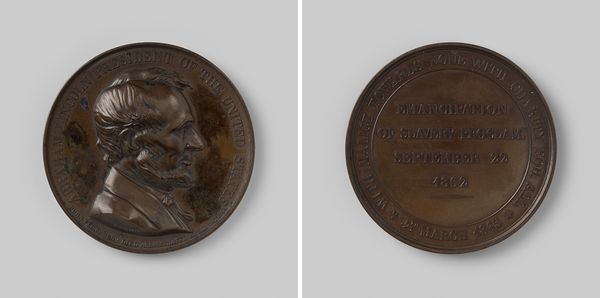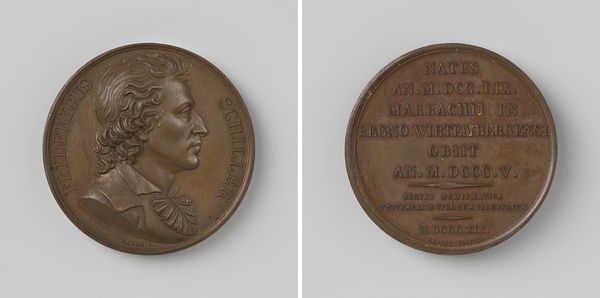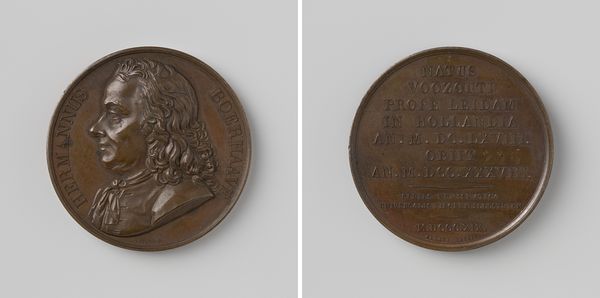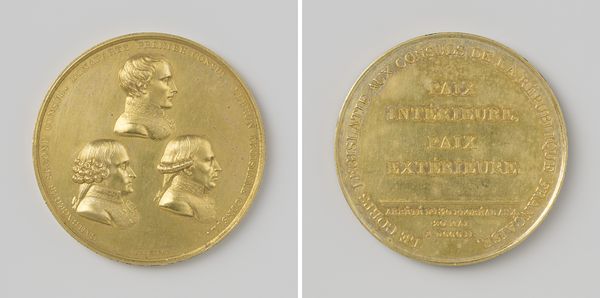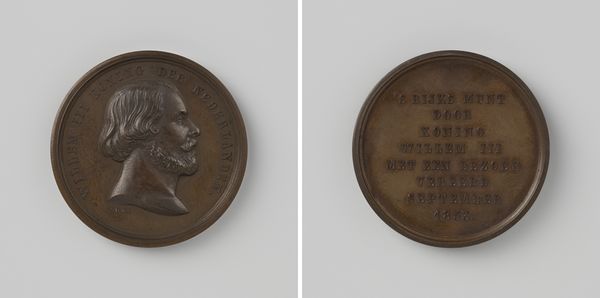
metal, bronze, sculpture
#
portrait
#
studio photography
#
advertising product shot
#
product studio photography
#
product shot
#
antique finish
#
dutch-golden-age
#
metal
#
retro 'vintage design
#
bronze
#
polished
#
sculpture
#
golden font
#
cutout
#
historical font
Dimensions: diameter 6.5 cm, thickness 1 cm
Copyright: Rijks Museum: Open Domain
Editor: This is the "Rembrandt-penning," a bronze or metal sculpture from 1906 by Johan Melchior Faddegon. It's fascinating how a relatively modern piece can so deliberately evoke the Dutch Golden Age. The detail is amazing. How do we interpret this work in its historical moment, especially considering the artist isn’t from the period the coin seems to represent? Curator: Exactly! While ostensibly celebrating Rembrandt, this piece speaks more to the early 20th century's relationship with its artistic past. The creation of such a commemorative medal reflects a growing sense of national artistic heritage and the institutionalization of art history as a discipline. Who do you think was the intended audience? Editor: Perhaps collectors or those interested in Dutch history and art? It feels like a souvenir almost, elevating Rembrandt to a symbol of national pride. Curator: Precisely! The medal form suggests mass production and wider accessibility. This links to the late 19th and early 20th-century phenomenon of museums becoming more accessible, alongside art education initiatives aimed at cultivating national identity. Note the inscription, which indicates it was produced by a company dealing in gold and silver works; a business capitalizing on cultural prestige. The “Rembrandt” brand, if you will, to sell gilded works. Does that make you consider the art differently? Editor: Definitely. I initially saw it as a tribute, but the commercial aspect changes things. It reveals the entanglement of art, national identity, and consumer culture at the time. Curator: Indeed, Faddegon’s piece illuminates how the "old masters" were strategically deployed to shape contemporary cultural values and market demands. What lessons can we draw about commodification of history from it? Editor: The work prompts me to reconsider the narrative surrounding art production; I should consider the context beyond a straightforward reading of its appearance and supposed subject. Curator: Me too; considering how even tributes can become products really shows the public role of art, doesn’t it?
Comments
No comments
Be the first to comment and join the conversation on the ultimate creative platform.

